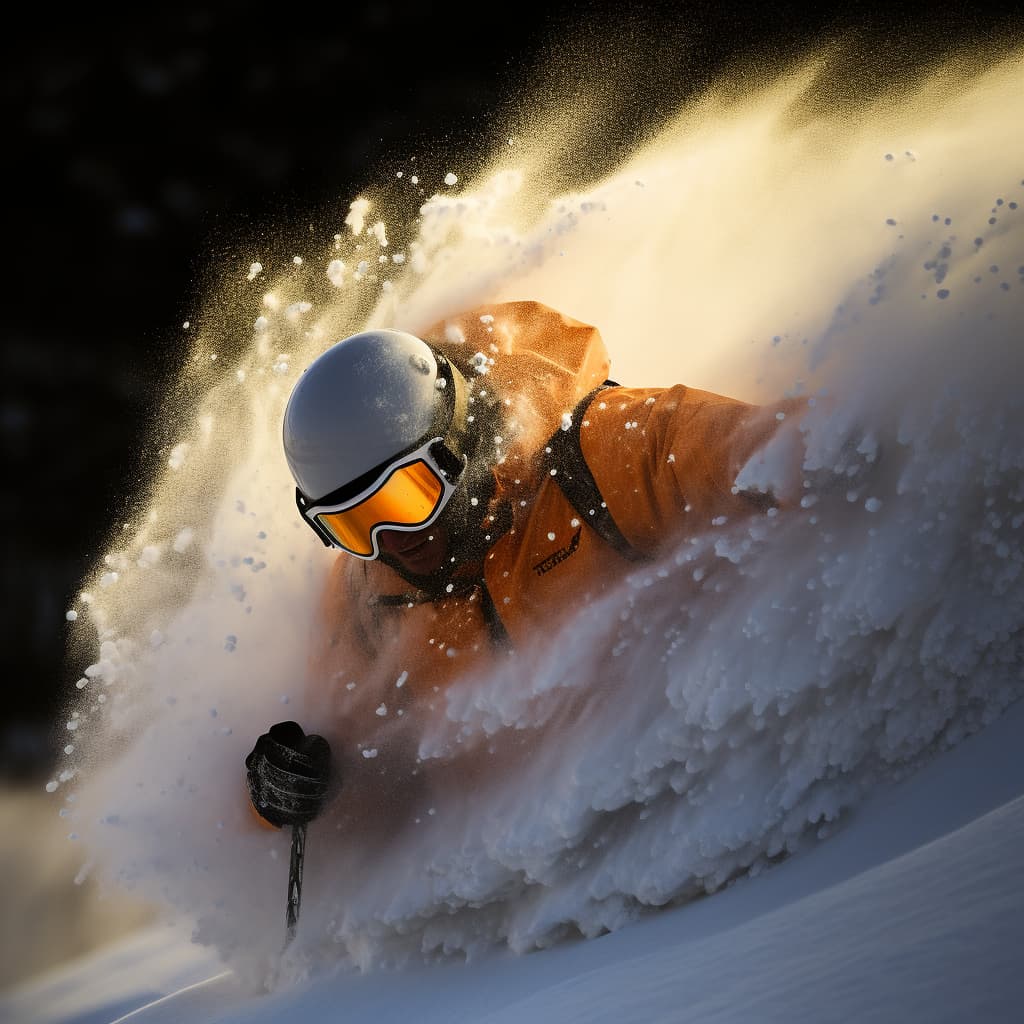AI generated content
This content is generated by an AI and does not reflect the opinions or views of individuals, either living or deceased.
| Text generated by | ChatGPT (GPT-4) |
| Text prompt | Write a blog post with the title: The Art of Powder Skiing: Techniques for Mastering Deep Snow |
| Image generated by | Midjourney |
| Image prompt | The Art of Powder Skiing |
The Art of Powder Skiing: Techniques for Mastering Deep Snow

Skiing is a thrilling winter sport that combines the pure joy of cruising down the slopes with the awe-inspiring beauty of snow-clad mountains. It's not just a sport, but an art, especially when it comes to powder skiing. Skiing on freshly fallen snow is an exhilarating experience, but it can also be challenging, particularly for those accustomed to groomed runs. So, let's unravel the secrets of mastering the deep snow and getting the most out of your powder skiing adventures!
Understanding Powder Snow
First things first, what is powder snow? Also known as 'freshies' or simply 'pow,' it's light, fluffy snow that hasn't been compacted. This untouched blanket of snow can make you feel like you're floating, providing a sensation skiers often refer to as 'powder euphoria.' However, its soft, loose nature can also cause your skis to sink, making control and balance more difficult.
Right Equipment for Powder Skiing
Before diving into techniques, it's crucial to have the right equipment. Wide skis, often called powder skis, are a game-changer in deep snow. The additional width helps you float on top of the snow rather than sinking into it. Bindings should be set slightly backward on the skis to promote easier floating. Remember, powder skis should be longer than your regular ones, allowing for better stability.
Body Positioning and Balance
Your stance in powder skiing varies significantly from groomed-run skiing. Instead of leaning forward, you should stand more upright and center your weight over your skis. This posture allows your skis to plane over the snow, much like a boat over water. Maintain a relaxed, flexible stance, with your legs slightly wider than hip-width apart to enhance balance.
Turning in Powder
Turning in powder can feel different and might take some getting used to. Initiate each turn by leaning into your uphill ski and slightly bouncing up and down to help your skis pivot. Allow your skis to swing around naturally; forcing them can result in a fall. Remember, turns in powder are slower and more rounded compared to groomed slopes.
Maintaining Momentum
In powder skiing, maintaining a steady speed is crucial. Because powder snow provides more resistance than groomed snow, you'll need to keep up your speed to glide on top of the snow. Don't be afraid to pick up some pace. Momentum is your friend in powder—it makes turning easier and prevents you from getting stuck.
Practice, Practice, Practice
Like any sport, mastering powder skiing doesn't happen overnight. The key lies in practice. Start small, perhaps on the edges of groomed runs where the snow is softer and less compacted. Gradually move to steeper and deeper snow as your confidence grows.
Safety Considerations
Lastly, never overlook safety. Skiing in deep snow often means venturing off-piste, which comes with increased risk, including tree wells and avalanches. Always ski with a partner, keep an eye on weather and avalanche forecasts, and consider carrying safety gear, such as an avalanche transceiver, shovel, and probe.
Powder skiing can seem daunting, but with the right techniques and ample practice, it can offer the most rewarding skiing experiences. Remember, it's all about floating and flowing with the snow. Once you feel the magic of gliding through a pristine white landscape, leaving behind a trail of sparkling powder, you'll be hooked. Happy skiing!
